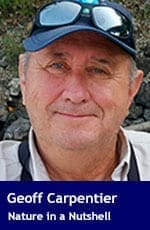
Ice and snow became our constant companions throughout this leg of the journey, as we dodged and plowed through millions of tonnes of it
 I left you last time off the coast of Baffin Island, where we shared the shore with polar bears and followed the tracks of early explorers. Let’s see what happened next on my 20-day journey northward.
I left you last time off the coast of Baffin Island, where we shared the shore with polar bears and followed the tracks of early explorers. Let’s see what happened next on my 20-day journey northward.
Nunavut was separated from the Northwest Territories in 1999, as a result of the enactment of the Nunavut Act and the Nunavut Land Claims Agreement Act, with Iqaluit established as its capital.
Nestled at the head of Frobisher Bay, Iqaluit was and is a safe harbour for explorers and residents alike. Quite modern with a strong infrastructure of roads and services, it’s now the economic hub of the region.
It was the jumping off point for the third leg of our journey. A day visit allowed us to see local museums and learn a bit about the Inuit culture.
Shortly after leaving town, we sailed to Monumental Island, where we had an incredible experience. On this tiny speck of land at the mouth of Frobisher Bay, wildlife  abounded. Peregrine falcons and gyrfalcons hunted kittiwakes and others seabirds. Three polar bears lolled on the shore, paying little attention to our passing, but nonetheless raising blood pressure all around.
abounded. Peregrine falcons and gyrfalcons hunted kittiwakes and others seabirds. Three polar bears lolled on the shore, paying little attention to our passing, but nonetheless raising blood pressure all around.
 Now it got tricky, for the ice was problematic. We soon learned from our expedition leader how to read ice maps. The density of the ice is displayed as fifths so one-fifth ice means that 20 per cent of the surface of the water is covered in ice. We could easily navigate up to about three-fifths ice cover and a little more if the ice was thinner.
Now it got tricky, for the ice was problematic. We soon learned from our expedition leader how to read ice maps. The density of the ice is displayed as fifths so one-fifth ice means that 20 per cent of the surface of the water is covered in ice. We could easily navigate up to about three-fifths ice cover and a little more if the ice was thinner.
Everyone was on high alert, and while the crew sailed and fretted, we watched the parading wildlife. Hundreds of seals, a few whales and thousands of sea birds seemed to be on every floe, in the air or resting on the water wherever we looked.
We finally reached Pangnirtung (Pang, as it’s known locally), where the community greeted us with open arms. For many on board, it was the first time they had set foot in an Inuit community and it was eye-opening and spell-binding.
Throat singing demonstrations and Inuit games took place.
I wondered how these difficult games originated. Competitions like finger pulling, the muskox, one-foot high kick, airplane, mouth pulling and knuckle hopping seemed to have the ability to injure joints and extremities. Perhaps they not only strengthened the mind and body, but also helped Inuits survive when times got really tough in the hunting fields.
Ice and snow became our constant companions throughout this leg of the journey, as we dodged and plowed through millions of tonnes of it.
In the south, we think the Arctic is melting so fast that one can’t even find frozen ground. The reality is that some areas are more greatly impacted than others. Some have more or at least as much
 ice as they’ve had for the past 50 years.
ice as they’ve had for the past 50 years.
We were told that east of Baffin is an area where ice conditions remain fairly stable and our experience certainly bore this out. One day we sailed almost all the way to Greenland to get around dense ice floes.
West of Baffin, ice conditions tend to be less stable but on the last two trips I’ve taken to the area, we had serious ice issues on both shores of Baffin. On this journey, shore ice was so thick we couldn’t get to our final destination at Resolute, so we had to sail back to Pang to disembark.
It turned out to be a lovely return journey bonus that provided incredible scenery, walruses, narwhals and beluga whales.
This series of three articles (see here and here previously posted) was intended to give you a glimpse of the remote northern part of Canada. It’s well worth visiting.

Geoff Carpentier is a published author, expedition guide and environmental consultant. Visit Geoff online at www.avocetnatureservices.com, on LinkedIn and on Facebook.
The views, opinions and positions expressed by columnists and contributors are the author’s alone. They do not inherently or expressly reflect the views, opinions and/or positions of our publication.

